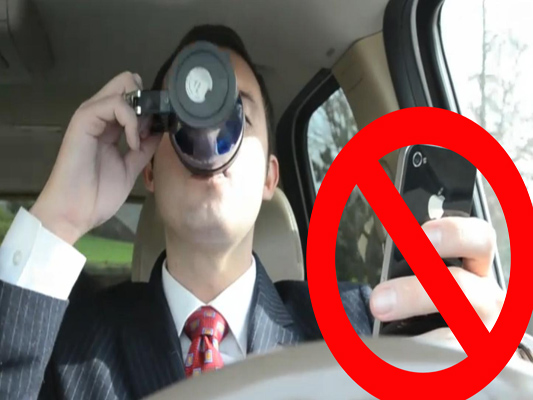The state of Pennsylvania is currently in the process of passing a “no-texting while driving” bill. The bill considers texting behind the wheel as a primary offense, whereby the police can pull over drivers if they are observed texting while driving. Laws similar to the no-texting while driving bill in Pennsylvania are popping up across the country. Many speculate that precedent will need to be established concerning the definition of “texting.” This precedent could have an interesting impact on the mobile application market.

For example, say a pizza delivery driver uses the Google Maps application on his phone to locate the homes of customers. If a police officer sees the driver holding his phone using the GPS, will this count as a texting violation? The primary purpose of GPS applications like Google Maps, or the popular MotionX application MotionX GPS Drive is to provide the driver with a visual representation of their surroundings so they can easily get to their destination.
These laws will provide a new opportunity for tech companies to tap into a market of “anti-texting while driving” applications. AT&T recognized this opportunity and developed DriveMode — an application that is manually activated by the user before they start their car. If the user receives a text, DriveMode will automatically respond and let the sender know that the recipient is currently driving. DriveMode also turns off the sound of incoming notifications in an attempt to reduce the urge to look at the phone while driving.
With the rise of tech entrepreneurship across the country, what will these laws mean for companies that develop apps specifically designed for drivers? If the precedent is set that “texting” includes the use of any smartphone applications while driving, many tech companies could be in danger of lawsuits from crash victims in the near future. These companies may be forced to adapt to the changing market or instead transition to a new one.
 This legislation, coupled with the development of a new anti-texting application market, raises the question of how voice-activated features and applications such as Apple’s Siri will be affected. Siri, a voice activated computerized assistant, requires the user to tap a button on the iPhone in order to say a command or ask a question.Will the simple action of holding the iPhone and pressing the home button to communicate with Siri cause confusion among observing officers?
This legislation, coupled with the development of a new anti-texting application market, raises the question of how voice-activated features and applications such as Apple’s Siri will be affected. Siri, a voice activated computerized assistant, requires the user to tap a button on the iPhone in order to say a command or ask a question.Will the simple action of holding the iPhone and pressing the home button to communicate with Siri cause confusion among observing officers?
Another voice-activated application similar to Apple’s Siri, Text’ n Drive, allows users to safely send text messages and reply to emails while driving. Siri and other voice-activated applications like Text’ n Drive will lead the way in the “mobile” market of technology behind the wheel.
My guess would be that precedent will allow for the use of voice-activated software. Many companies like OnStar are already leading the way with innovation by integrating new technologies that will read Facebook messages aloud to the driver. Rest assured, you will be able to feed your texting addiction one way or another behind the wheel.









